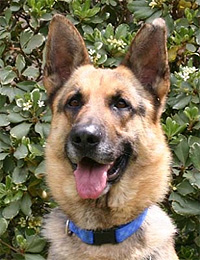Seizures

This is an abnormal disturbance of the brains function that results in change of physical actions (convulsion) and/or behavioral change. Seizures are usually short, less than 1 to 3 minutes in length, followed by a recovery period that can last only a few minutes to several hours.
Symptoms
A minor seizure, which lasts a few minutes, is usually characterized by head bobbing. Subtle or obvious behavior changes usually precede oncoming seizures. The dog remains conscious and responsive. Try to keep your pet calm and away from noise and excessive light. Always talk to your veterinarian.
Severe seizure symptoms include sudden unconsciousness with muscle spasms, “paddling” legs or extended, rigid legs or loss of bladder or bowel control. Seizures lasting more than 3 minutes or several reoccurring within a few minutes of each other require emergency care because it can dangerously elevate a dog’s body temperature. If your dog overheats or collapses, use cold wet towels to cool down the body and massage the body to stimulate blood flow. These seizures require immediate veterinarian care.
To diagnose cause of seizures, a neurological exam, blood work, urinalysis, tick disease panel, thyroid panel, EEG or MRI can be done. Causes can include infectious disease, blood sugar abnormalities, thyroid imbalance, liver or heart disease, toxins, trauma or brain tumor.
Treatment
Not all seizures need to be medicated. There is no known cure for seizures. Anticonvulsant drugs such as Phenobarbital and potassium bromide can be prescribed to treat these body convulsions. It normally takes a dog a few weeks to adjust to the medication and during that time they will seem groggy and weak. Blood levels need to be monitored regularly to make sure the level is appropriate.





















